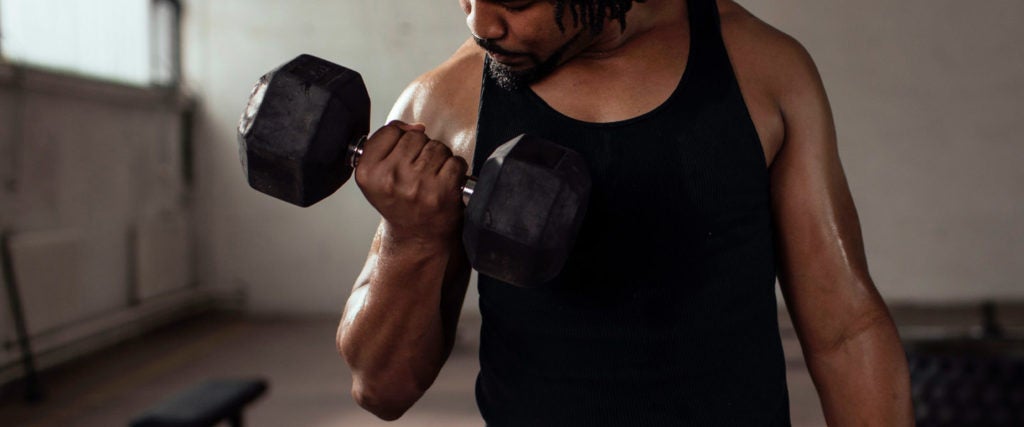Like many of my peers, I first learned about jerk-off arm as a shitty teenager making fun of vaguely asymmetrical dudes. Though oddly British, Urban Dictionary refers to this condition as “Wanker’s arm,” which occurs “when the muscle of one arm is pumped up due to too much masturbation.” Charming!
What I didn’t realize until recently is that the best, or at least most physically fit comeback to that insult would’ve been, “Actually, I got that from unilateral training” — i.e., the practice of working out one side of the body at a time.
Although most exercises, like squats, deadlifts, rows and other forms of bilateral training, are all designed to work both sides of the body at the same time, unilateral workouts subscribe to the Wanker’s arm school of thought. The key difference is that instead of climaxing when you’re done, you just workout the other side instead. And although this approach might seem like it lends itself to asymmetries from losing count on each side, the purpose of unilateral exercises is the exact opposite: They’re intended to correct all the tiny muscle imbalances in our bodies created from using both sides at the same time.
“It’s very common that one side might be more dominant than the other, so it’s crucial to balance,” certified personal trainer Andy Brown tells me. For beginners, he recommends doing the same number of sets and reps on each side, but over time as individuals notice which side is stronger, they can adjust more intuitively and “isolate and concentrate on one side versus the other,” he explains.
Whether you’re doing lunges or a single arm bicep curl, working out one side at a time allows you to apply more force to each rep, improving balance and core strength. “Using just one leg or one arm dictates that the rest of your body must engage to keep you balanced and upright,” certified personal trainer Tami Smith explains. “The bulk of that engagement will come from your core, which will serve to stabilize you throughout the movement.”
According to Smith, unilateral exercises are best for anyone who plays sports competitively. “Any sport or activity that requires running will also require the participant to use one leg at a time, pushing off one leg and then the other,” Smith says, noting that actions like sprinting, cutting and jumping are all unilateral movements. Think about it — when was the last time you saw your favorite professional athlete in the heat of the game with two feet on the ground at once? “Unilateral movements are a more accurate reflection of the type of movements they will be forced to perform on the field,” Smith adds.
Fellow personal trainer Rachel MacPherson points out that the biggest risk of being uneven isn’t looking funny, it’s getting hurt. “If you have one dominant side of your body, that side might be taking more of the load than the opposing side,” MacPherson says. “Sometimes, this can lead to injury and pain, such as backache. With bilateral training, you might not catch these imbalances.”
If you’re new to lifting weights, in most cases it’s best to master working out both sides of the body at the same time first. However, “some unilateral exercises are suitable for beginners such as one-arm bicep curls, one-arm tricep kickbacks, one-arm rear delt flyes, one-arm rows and one-arm lateral raises,” MacPherson recommends. “In fact, these exercises can be easier done unilaterally because you can use your core muscles to help you perform the exercise and get your balance, especially with any exercise done while leaning or hinging over.”
As for lower body workouts, Smith suggests side, forward and reverse lunges, single-leg deadlifts, pistol squats and donkey kicks. Brown cosigns all of the above, adding Bulgarian split squats, and especially for unilateral training novices, just trying to balance on one leg at a time for 10 to 30 seconds.
Finally, when it comes to curing “Wanker’s arm” (because I absolutely asked), Smith says wrist flexion can help. Specifically, when you “hold a dumbbell in your hand, place your forearm on your thigh and your wrist on your knee. Slowly lift the dumbbell, without lifting your arm, toward your bicep,” she says. Likewise, single-arm hammer curls and squeezing a racquetball or stress ball can help guys compensate for their evident masturbatory strength.
Who knows, it might be a little more productive than fixing it the old fashioned way.

